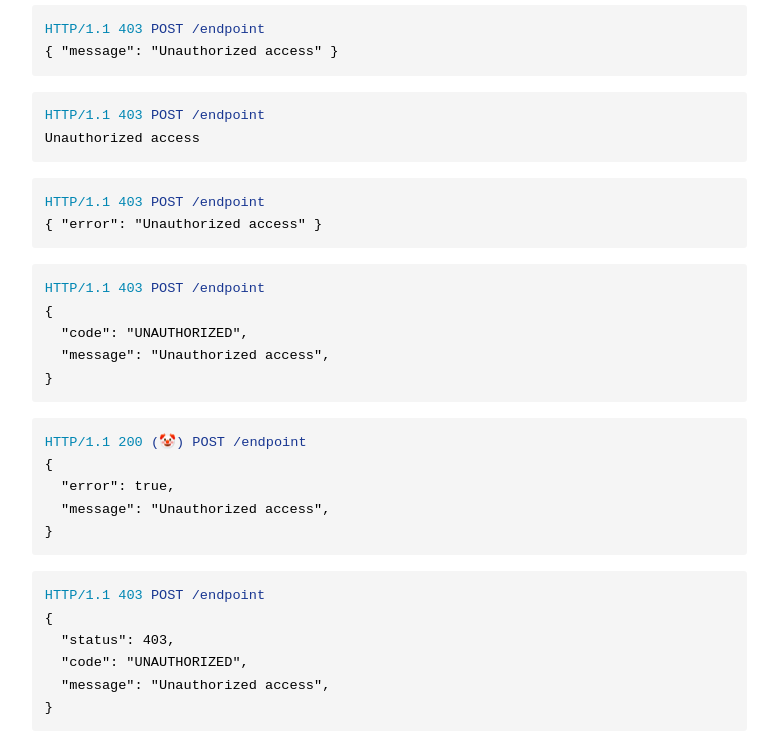this post was submitted on 30 Aug 2024
125 points (99.2% liked)
Programming
18364 readers
101 users here now
Welcome to the main community in programming.dev! Feel free to post anything relating to programming here!
Cross posting is strongly encouraged in the instance. If you feel your post or another person's post makes sense in another community cross post into it.
Hope you enjoy the instance!
Rules
Rules
- Follow the programming.dev instance rules
- Keep content related to programming in some way
- If you're posting long videos try to add in some form of tldr for those who don't want to watch videos
Wormhole
Follow the wormhole through a path of communities [email protected]
founded 2 years ago
MODERATORS
you are viewing a single comment's thread
view the rest of the comments
view the rest of the comments


I like the fourth or the last one since it encourages all other error responses to follow a similar standard. That will allow the client to have a reusable error model and error checking.
I've had to use APIs where every response was 200 ok with json, 400 bad request with pain text that said unauthorized, or a 500 error that returned an HTML error page. The worst.